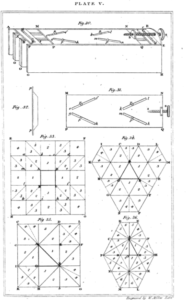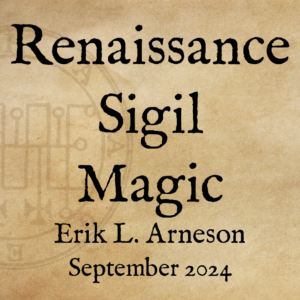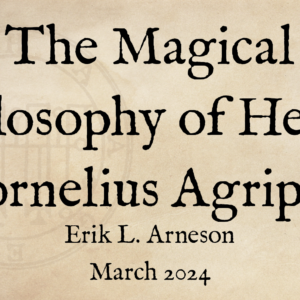This is part 1 of a 2 part series on the magical origins of the kaleidoscope by Tony Gilbert. Click here to read part 2!
How a Toy’s Curious Origins Reflect the History of Magic and Proto-Science
A sexy, mind-blowing mobile device, so incredible that it may alter your perception of reality. The graphics are phenomenal, the colors are rich and vibrant, and the visuals look so real, you’d think you can reach out and touch them.
Is that how you would describe a kaleidoscope? Kaleidoscopes aren’t trending, they’re probably not topping many Christmas wishlists, and social media influencers aren’t glamorizing them. Compared with today’s boundless content and gadget options, a kaleidoscope may seem like a lame, bygone relic, or a forgotten toy from youth, used once then tossed aside. But when kaleidoscopes were first introduced to the public, they caused a stir, a sensation comparable to the same enthusiasm used in the description above.
The origin story of the kaleidoscope even meanders around magic, an eccentric mage who was persecuted by the Inquisition, and secret societies of scholars. A famed inventor, David Brewster, and an alchemist and tinkerer, Giambattista della Porta, each played a role in this tale. And in the history of the kaleidoscope, a curious time is revealed, when science and magic seemingly overlapped.
Through the Looking-Glass
Peer through a kaleidoscope and witness a tye-dye spiral of dazzling colors and shapes. See the outline of a mandala; this one resembles a snowflake, with bold contours defining the perimeter of the shape. Follow the line in detail, up-close, notice the abrupt angles, geometric formations, and patterned harmony. Upon each edge, the hexagonal crystalline structures sprout into new, tiny snowflakes. One multiplies and births a dozen more, morphing and expanding into snowflakes evermore. Consider the colors, notice that these are painted shapes—in hues of vibrant blue, bold red, luminous yellow—a prism’s rainbow that changes in color and shape with each twist and tumble.
Each new scene within the kaleidoscope is spectacular, but also fleeting. The eye is mesmerized by stunning visual effects and geometrics, as mirrors multiply mundane objects. Perhaps for these reasons, the kaleidoscope has long been a starting point for meditation and contemplation. “Reflections of the mind about reflections on mirrors,” you might say; or, “reflecting on a reflection.” In fact, an entire treatise was written by the inventor of the modern kaleidoscope, manifesting the hope that the device would serve to be much more than a mere toy, but something that we might call a “philosophic tool.”
It’s What’s on the Inside that Counts
Kaleidoscope types vary widely. They can be homemade or cheaply mass-produced from cardboard and plastic. Others are finely crafted artisanal pieces with multiple mirrors or eyepieces. A few even sell for thousands of dollars!
A common and inexpensive type of kaleidoscope is made with mirrors formed into a triangle. The mirrored triangle can be composed of either three or two mirrors. This is fitted inside a tube, often called a spyglass. Affixed on one end is an eyepiece, and at the opposite end is a wheel—the star of the show—containing colorful knickknacks or treasures. The teleidoscope, another type of kaleidoscope, dispenses with the wheel of knicknacks, and instead relies only on mirrors and optics to skew the view of the real-world.
Kaleidoscopic effects can be recreated easily, using only two small mirrors placed side-to-side with tape for a hinge. When an object is placed in front of the two mirrors, and the mirrors are folded in together, like closing a book, as the angle is narrowed, the object appears to multiply. At an angle of 60 degrees, the two mirrors produce six images.
The basic functions inside all kaleidoscopes are similar, and even the most rudimentary version can produce extraordinary visuals. What we often see inside the kaleidoscope is a visualized fractal or mandala, offering practically infinite combinations of images with each turn of the wheel. This fractal art is achieved by showcasing the object’s self-symmetry or “self-similarity,” through the triangle’s prism. In fact, the word fractal means fractured or shattered, and that same fractured or shattered effect is achieved through the kaleidoscope’s multiple mirrors.


Brewster’s Millions
David Brewster is credited as the inventor of the modern kaleidoscope in 1816. He was known for much more than this single toy. Brewster was already an established scientist and expert on optics; he discovered photoelasticity—the study of the visual stress points and contours in materials. He invented an updated stereoscope, and he wrote entries about optics for the prestigious Encyclopædia Britannica. While researching his biography on Isaac Newton, Brewster even had the rare opportunity to pore over Newton’s nachlass, a lifetime’s worth of notes and musings. In a time before Google or Wikipedia, Brewster was the go-to guy for questions on optics, telescopes, microscopes, and material science.
Brewster’s words did much to popularize science. He had a flair for the whimsical and poetic. In his book More Worlds Than One, he brought his understanding of optics into focus, sharing this with readers:
The telescope brought into view worlds as numerous as the drops of water which make up the ocean; the microscope brought into view a world in every drop of water. Infinity in one direction was balanced by infinity in the other.
Published in 1854, More Worlds Than One discussed the possibility of extraterrestrial life, and pondered the physical conditions that would be necessary to sustain it. In the century before the Drake Equation or the founding of SETI, before the term “science fiction” was coined, Brewster was already popularizing the idea that life beyond Earth was not only possible, but even highly probable. “Citizens of the spheres,” wrote Brewster, “may have his home in subterranean cities warmed by central fires, or in crystal caves cooled by ocean tides.”
Brewster was ahead of his time. A century before Einstein published his Theory of Relativity, Brewster noted the correlation between time and space, saying there was a “mutual relation of an atom of time and an atom of space.” He was aware that stargazing was like looking into the past, acknowledging that the light from a distant star may have travelled from a long-deceased celestial body. He surmised that other planets might be gaseous or liquid, and he was aware that larger planets like Jupiter exert a gravitational pull far stronger than Earth.
Brewster’s beliefs could not be pigeonholed or fit neatly into a box. Perhaps he struggled to balance belief and spirituality with reason and science, even describing his own astronomical ideas as bordering on the “blasphemous.”
On one hand, one could argue that Brewster was a champion for science over religion. In his 1841 book, The Martyrs of Science, he chronicled the lives of Galileo, Tycho Brahe, Kepler, and even mentioned Giordano Bruno, who was burned alive at the stake by the Inquisition. But on the other hand, Brewster wrote within a Christian modality; his religious worldview skewed his scientific findings, and he expressed the belief that science served to further the aims of religion. The study of astronomy, for example, should not supplant one’s belief in Deity, but rather supplement it. To Brewster, a better understanding of the stars and planets further illuminated one’s understanding of the Creator’s Heavens. And for all of his radical notions in More Worlds Than One, not once did Brewster describe “alien life” as it is popularly theorized today. Instead, his description of beings beyond Earth fall within a Christian milieu, suggesting that life on other planets must be souls of people yet to live or who have passed away, a Heavenly home or place for karmic recycling.
What’s more, Brewster was an ardent critic of the theory of evolution, writing a rebuttal titled, The Facts and Fancies of Mr. Darwin. But still, Brewster was certainly not what we would call today a Young Earth theorist; he was neither a fundamentalist nor a Biblical literalist who believed that the Earth was only 6,000 years old, and he certainly would not have been a fan of Ken Ham’s Creation Museum in Kentucky. He was adamant that the cosmos was at least millions of years old, and he had no qualm with the notion that our world was formed eons before people, taking longer than the six days of creation proposed in the Book of Genesis. Ironically, for all his opposition to Darwin’s theory, Brewster speculated in More Worlds Than One that extraterrestrial life would have to adapt and evolve to the conditions of other planets, writing that there would be “diversified modes of life […] new orders and species, new forms of life.” He anticipated that space would reveal new elements of chemistry, botany, and zoology. Brewster seemed to believe in evolution on other planets, but not on this one.
Share Your Toys
It should not be surprising, then, to learn that David Brewster had a lot to say when he introduced the world to his kaleidoscope in 1816. He was zealously hopeful that this would be more than a toy, but also a tool for philosophy that would improve humankind. In 1819, Brewster published A Treatise on the Kaleidoscope, a nearly 200-page instruction manual and love letter to his invention. Brewster coined the word kaleidoscope from Greek to mean, “an observation of beautiful forms.” His book assured readers that the device was valuable to “all the ornamental arts” by creating an “infinity of patterns.”
The release of the kaleidoscope caused a riotous sensation, one rivaling what later generations would see the day after Thanksgiving, fighting tooth-and-nail for an Xbox or Tickle-Me-Elmo. Brewster estimated that over 200,000 units sold within the first three months, spawning a multitude of cheap knock-offs and counterfeits. One commentator had this to say about the kaleidoscope’s uproar: “A universal mania for the instrument seized all classes, from the lowest to the highest, from the most ignorant to the most learned, and every person not only felt, but expressed the feeling, that a new pleasure had been added to their existence.”
The kaleidoscope eventually moved “from the streets into the parlors,” and it became a fixture of the middle class and leisure class. Higher-end models were sold on legged stands, better-suited for refined viewing. Even Victor Hugo satirized the kaleidoscope’s new place in society, writing in Les Miserables, “The date of the year 1823 was indicated, nevertheless, by two objects which were then fashionable in the bourgeois class: to wit, a kaleidoscope and a lamp of ribbed tin.”
Featured image by Dmitri Posudin from Pixabay






[…] This is part 2 of 2 part series on the magical origins of the kaleidoscope by Tony Gilbert. Read part 1 here! […]